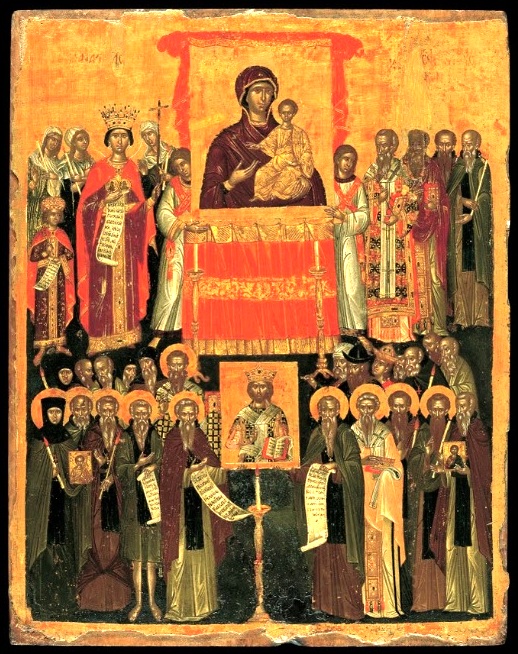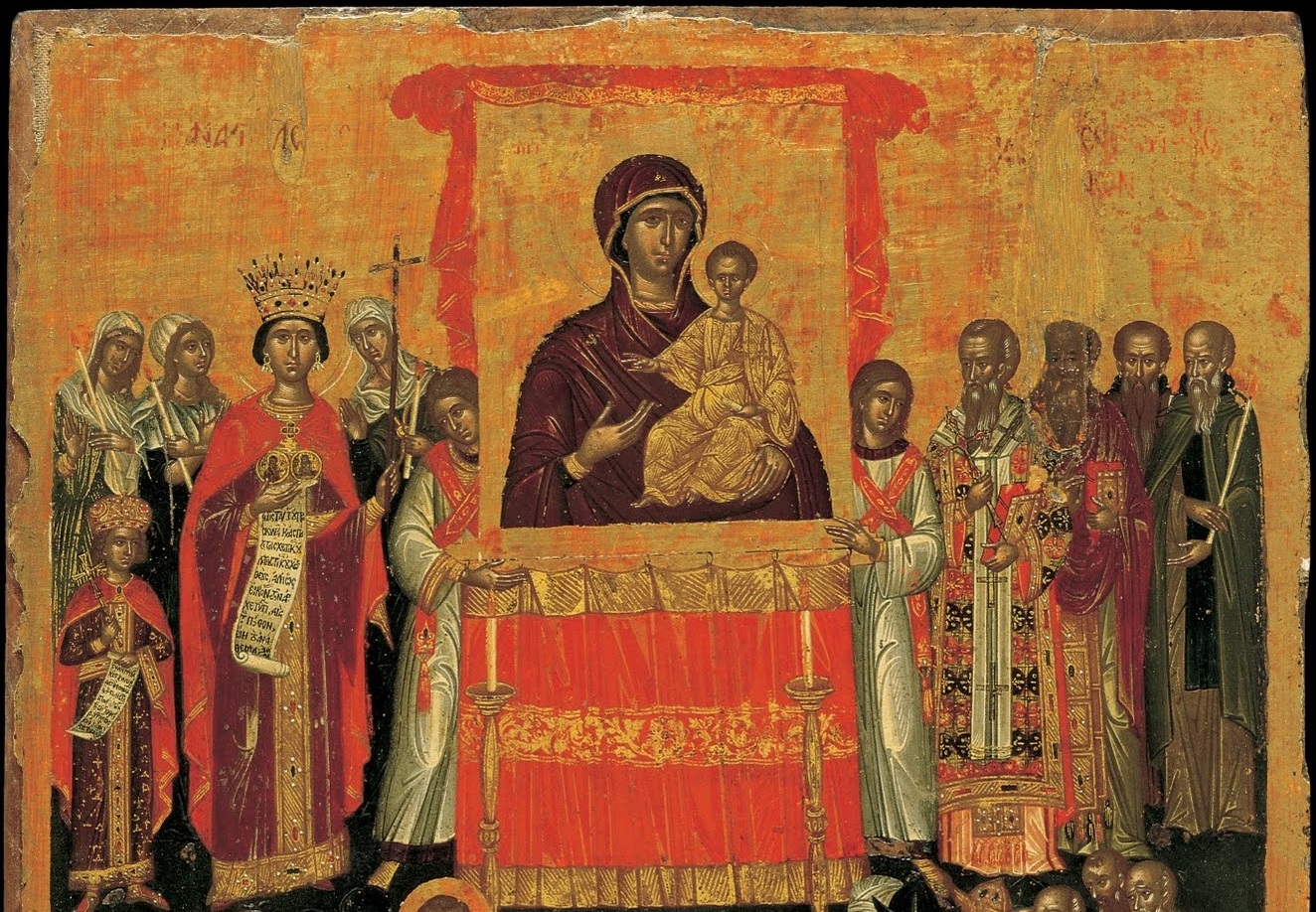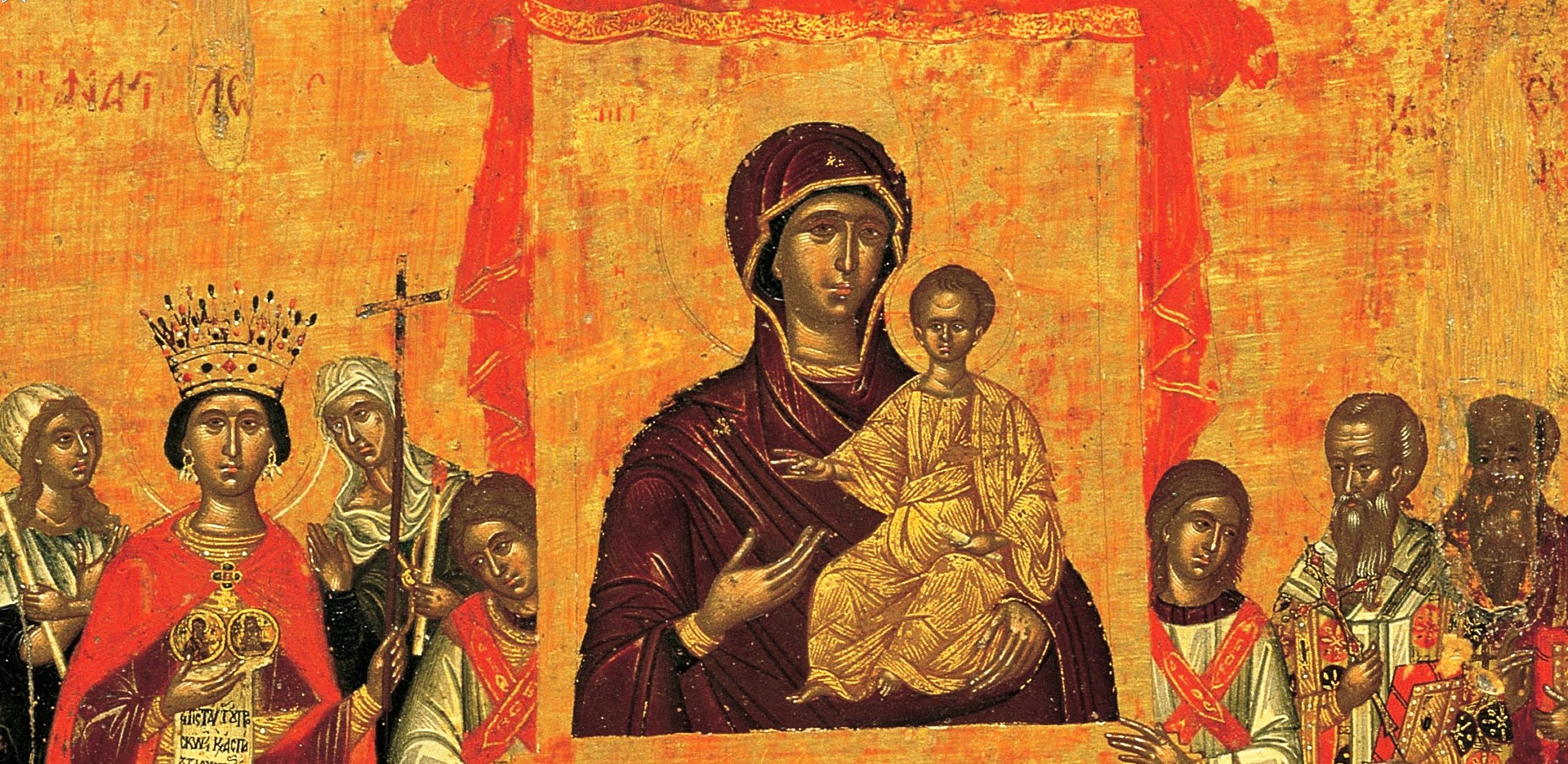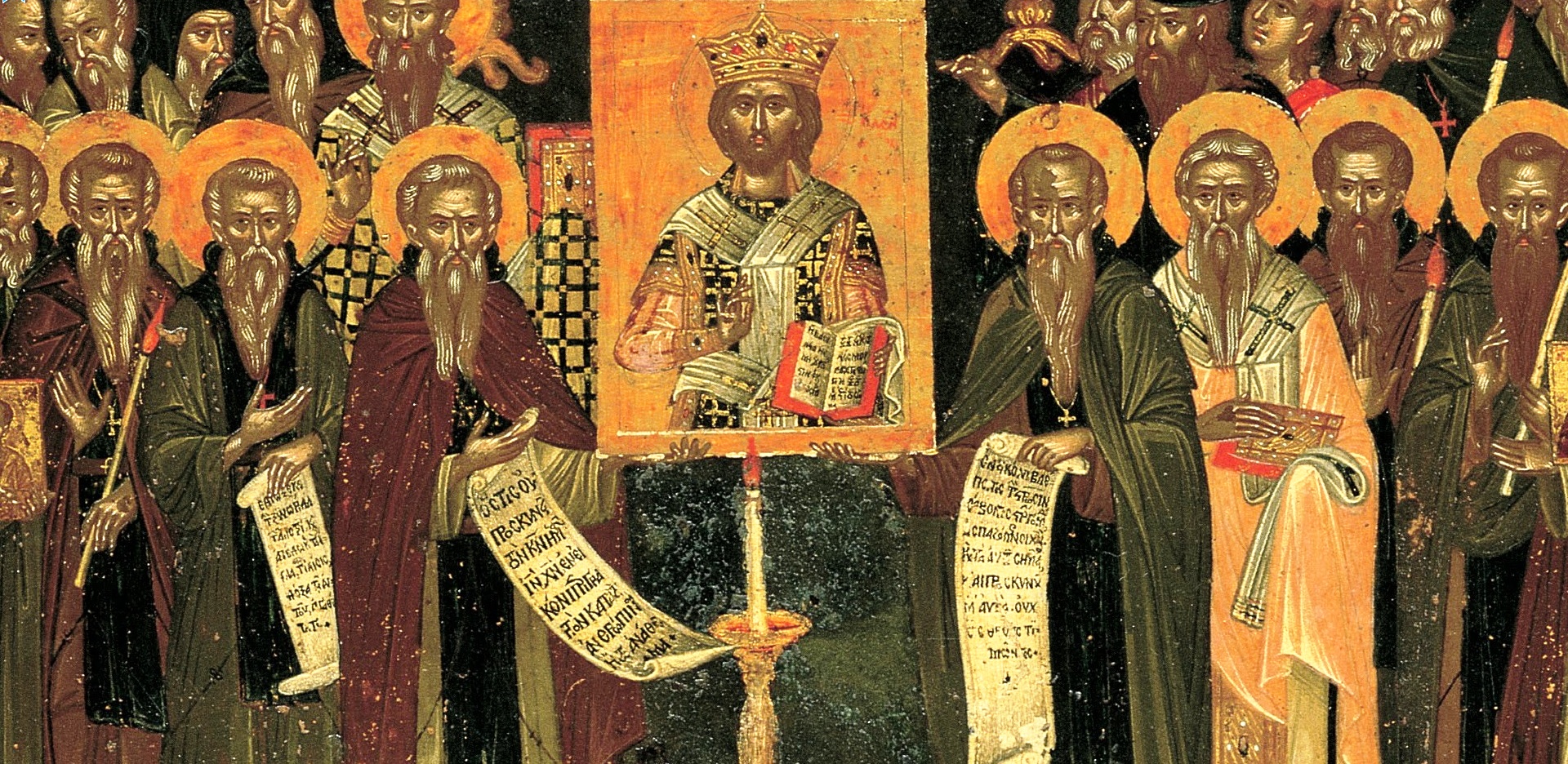The Triumph of Orthodoxy
Оригинал взят у expertmus в The Triumph of Orthodoxy


Celebrating the restoration of Holy Images at the end of Iconoclasm
The overthrow of Iconoclasm in AD 843 was seen as a triumph for the orthodox branch of the Christian church. This icon portrays the annual Festival of Orthodoxy celebrated on the first Sunday in Lent. It was painted in egg tempera on gold leaf on a wooden panel covered with gesso and linen.
The icon of the Virgin Mary Hodegetria appears at the centre of the top register on a stand draped with red and gold cloth. This, the most famous icon of Constantinople, was believed to have been painted by the Evangelist St Luke, and thus to be an actual life portrait of the Virgin. The regent Empress Theodora and her young son, the emperor Michael III (reigned AD 842-67) appear on the left, wearing jewelled crowns and robes. On the right is the Patriarch Methodios (in office from 843-7) together with three monks - supporters of the Iconophile cause.
The lower register depicts eleven saints and bishops, some of whom triumphantly display small icons. All were active iconophiles, such as the female figure on the far left, identified as St Theodosia of Constantinople who, at the outbreak of Iconoclasm, reputedly tried to save the famous icon of Christ placed over the Chalke (Bronze) Gate of the Imperial Palace. Seven of the figures can be identified as (from left to right): St Theodosia (1), St Theophanes the Confessor (5), St Theodore the Studite (6), St Theodore and St Theophanes, the Graptoi (7 and 8), St Theophylaktos (10) and St Arsakios (11).


Production place
Painted in Constantinople
Date
1400 (circa)
Dimensions
Height: 378 millimetres
Width: 310 millimetres
Depth: 53 millimetres
The British Museum
Department: Prehistory and Europe
Registration number: 1988,0411.1
Additional IDs IC 18


This icon has been photographed under infrared light; the photographs are in the departmental object folder.


Published: The National Art Collections Fund Review 1988, 93-4; D. Buckton, Byzantium: Treasure of Byzantine Art and Culture, London, 1994, no 140.



The Restoration of icons.
1550-1575.
Cretan workshop.
51, 2 x 40,7.
Benaki Museum of Greek Civilization. ГЕ 21170.

The representation depicts the Triumf of Orthodoxy, a festival marking the end of iconoclasm in 843 and thre triumph of the Greek spirit over the iconoclast movement in the East. Although a copy of a Palaiologan model, it was revitalized by the addition of iconographic elements from Cretan painting.





© Блог научного коллектива Музея имени Андрея Рублева.
Эксперты приводят в пример воцерковлённое сообщество - сообщество Музея древнерусской культуры и искусства имени Андрея Рублёва: http://rublev-museum.livejournal.com/392705.html
#МузейРублева #МузейАндреяРублева #музей_имени_Рублева #Византия #иконография #икона #иконопись #Православие #rublevmuseum



Celebrating the restoration of Holy Images at the end of Iconoclasm
The overthrow of Iconoclasm in AD 843 was seen as a triumph for the orthodox branch of the Christian church. This icon portrays the annual Festival of Orthodoxy celebrated on the first Sunday in Lent. It was painted in egg tempera on gold leaf on a wooden panel covered with gesso and linen.
The icon of the Virgin Mary Hodegetria appears at the centre of the top register on a stand draped with red and gold cloth. This, the most famous icon of Constantinople, was believed to have been painted by the Evangelist St Luke, and thus to be an actual life portrait of the Virgin. The regent Empress Theodora and her young son, the emperor Michael III (reigned AD 842-67) appear on the left, wearing jewelled crowns and robes. On the right is the Patriarch Methodios (in office from 843-7) together with three monks - supporters of the Iconophile cause.
The lower register depicts eleven saints and bishops, some of whom triumphantly display small icons. All were active iconophiles, such as the female figure on the far left, identified as St Theodosia of Constantinople who, at the outbreak of Iconoclasm, reputedly tried to save the famous icon of Christ placed over the Chalke (Bronze) Gate of the Imperial Palace. Seven of the figures can be identified as (from left to right): St Theodosia (1), St Theophanes the Confessor (5), St Theodore the Studite (6), St Theodore and St Theophanes, the Graptoi (7 and 8), St Theophylaktos (10) and St Arsakios (11).


Production place
Painted in Constantinople
Date
1400 (circa)
Dimensions
Height: 378 millimetres
Width: 310 millimetres
Depth: 53 millimetres
The British Museum
Department: Prehistory and Europe
Registration number: 1988,0411.1
Additional IDs IC 18


This icon has been photographed under infrared light; the photographs are in the departmental object folder.


Published: The National Art Collections Fund Review 1988, 93-4; D. Buckton, Byzantium: Treasure of Byzantine Art and Culture, London, 1994, no 140.



The Restoration of icons.
1550-1575.
Cretan workshop.
51, 2 x 40,7.
Benaki Museum of Greek Civilization. ГЕ 21170.

The representation depicts the Triumf of Orthodoxy, a festival marking the end of iconoclasm in 843 and thre triumph of the Greek spirit over the iconoclast movement in the East. Although a copy of a Palaiologan model, it was revitalized by the addition of iconographic elements from Cretan painting.





© Блог научного коллектива Музея имени Андрея Рублева.
Эксперты приводят в пример воцерковлённое сообщество - сообщество Музея древнерусской культуры и искусства имени Андрея Рублёва: http://rublev-museum.livejournal.com/392705.html
#МузейРублева #МузейАндреяРублева #музей_имени_Рублева #Византия #иконография #икона #иконопись #Православие #rublevmuseum